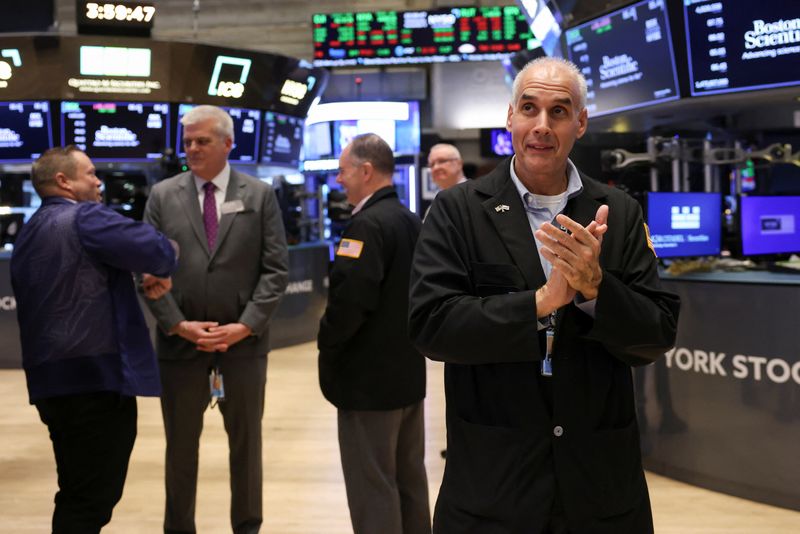By Chuck Mikolajczak
NEW YORK (Reuters) -The breached the 6,000 mark and was poised for its biggest weekly percentage gain in a year, as Donald Trump’s election victory and a possible Republican Party sweep in Congress fueled expectations for favorable business policies.
Also supporting stocks this week was a widely expected interest rate cut of 25 basis points by the Federal Reserve on Thursday.
The S&P 500 and the Dow Industrials were on track for their best weekly percentage jump since early November 2023, with the Nasdaq on pace for its best in two months and second-best week of 2024.
Investors were also monitoring a likely “Red Sweep” as Republicans were set to keep their narrow lead in the House of Representatives after winning control of the Senate. That would make it easier for Trump to enact his legislative plans.
Expectations for lower corporate taxes and deregulation under Trump have helped push the benchmark S&P index and the Dow to intraday record highs for the three straight sessions. The S&P is on track to secure its 50th record close of the year.
“It is a psychologically important number but with all the developments this week, it’s just that. It’s just the number,” said Mike Dickson, head of research and quantitative strategies at Horizon Investments in Charlotte, North Carolina.
“There’s been so many things, so much good news for the market this week as evidenced by the prices, all of that far outweighs whether or not we’re on the right or left hand side of that 6,000 number when the close happens.”
The rose 351.19 points, or 0.80%, to 44,080.53. The S&P 500 gained 34.43 points, or 0.58%, at 6,007.53 and the advanced 35.69 points, or 0.18%, to 19,305.15.
The S&P 500 and Nasdaq were set for their fourth straight session of gains.
Rate-sensitive sectors such as real estate and utilities were the best performing of the 11 major S&P 500 groups as Treasury yields fell for a second straight session after a sharp jump following the election.
But the benchmark remained near a four-month high, and markets have scaled back expectations for the pace of Fed rate cuts in 2025 as concerns remain over the incoming administration’s proposed tariffs which are likely to rekindle inflation.
U.S. consumer sentiment rose to a seven-month high in early November, with a measure of households’ expectations for the future climbing to the highest in more than three years, led by brightening outlooks among Republicans, the University of Michigan’s Consumer Sentiment Index showed.
Airbnb shares dropped more than 8% after the homestay company missed third-quarter profit estimates, while social media company Pinterest (NYSE:) slumped 16% after a disappointing revenue forecast.
U.S.-listings of Chinese companies lost ground as the government’s latest fiscal support measures once again failed to impress investors. JD (NASDAQ:).com and Alibaba (NYSE:) both slumped by at least 6%.

Advancing issues outnumbered decliners by a 1.63-to-1 ratio on the NYSE and by a 1.1-to-1 ratio on the Nasdaq.
The S&P 500 posted 84 new 52-week highs and 10 new lows while the Nasdaq Composite recorded 188 new highs and 100 new lows.


